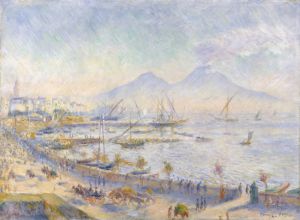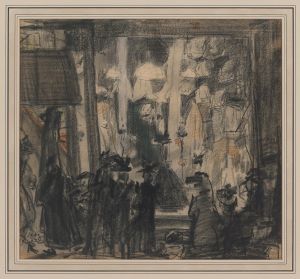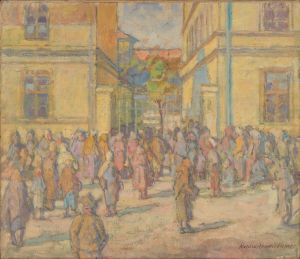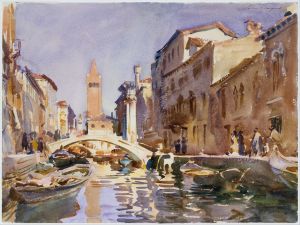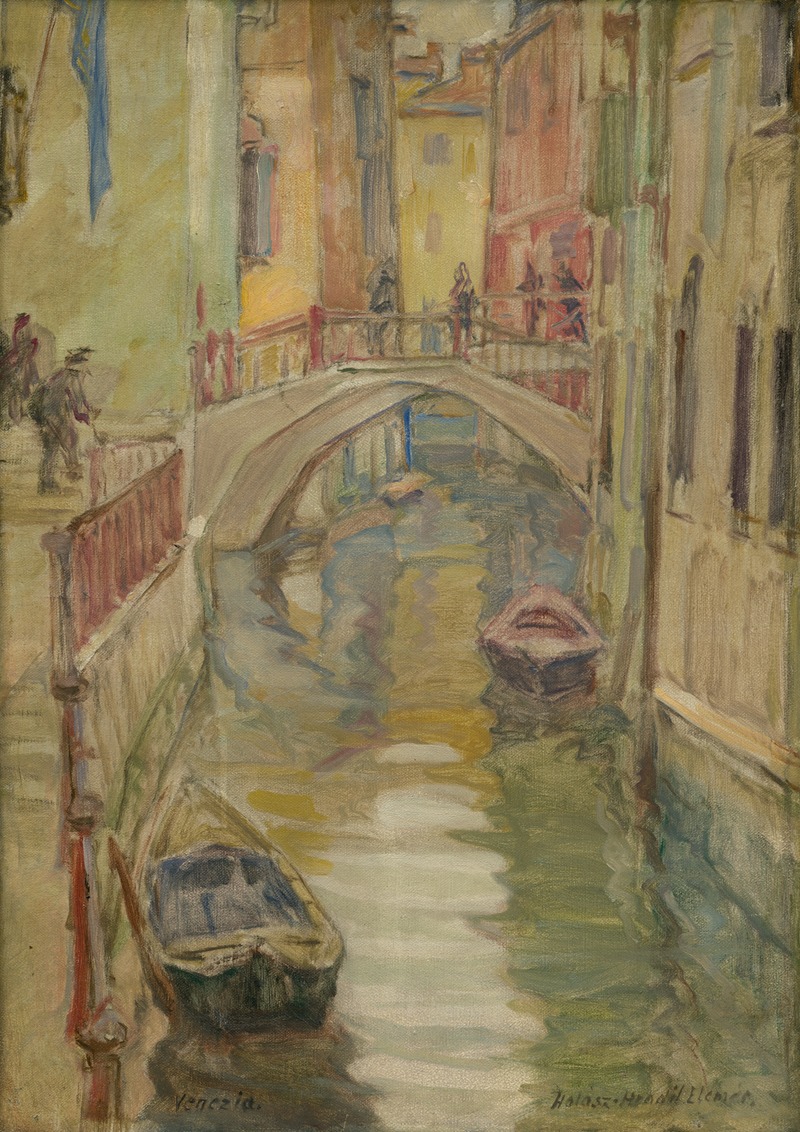
Venice
A hand-painted replica of Elemír Halász-Hradil’s masterpiece Venice, meticulously crafted by professional artists to capture the true essence of the original. Each piece is created with museum-quality canvas and rare mineral pigments, carefully painted by experienced artists with delicate brushstrokes and rich, layered colors to perfectly recreate the texture of the original artwork. Unlike machine-printed reproductions, this hand-painted version brings the painting to life, infused with the artist’s emotions and skill in every stroke. Whether for personal collection or home decoration, it instantly elevates the artistic atmosphere of any space.
Elemír Halász-Hradil was a Hungarian painter known for his contributions to the art world during the late 19th and early 20th centuries. One of his notable works is "Venice," a painting that captures the essence and beauty of the iconic Italian city. While detailed information about this specific painting is limited, we can explore the context of the artist's life and his general style to better understand the significance of "Venice."
Elemír Halász-Hradil was born in 1873 in the Austro-Hungarian Empire, in what is now Slovakia. He studied at the Academy of Fine Arts in Budapest and later continued his education in Munich, which was a significant center for art at the time. His education and exposure to different art movements influenced his style, which often incorporated elements of realism and impressionism.
Halász-Hradil's work frequently depicted landscapes, cityscapes, and genre scenes, reflecting his keen interest in capturing the world around him. His travels across Europe provided him with ample inspiration, and Venice, with its unique architecture, canals, and vibrant atmosphere, was a popular subject for many artists of his time. The city of Venice has long been a muse for artists due to its picturesque scenery and rich cultural history.
In "Venice," Halász-Hradil likely employed his characteristic style, which often featured a careful balance of light and shadow, as well as a nuanced use of color to convey mood and atmosphere. His paintings are known for their attention to detail and the ability to evoke a sense of place, which would have been particularly effective in capturing the distinct ambiance of Venice.
While specific details about the composition and elements of "Venice" by Halász-Hradil are not readily available, it is reasonable to assume that the painting would reflect his skill in rendering architectural details and his ability to capture the interplay of light on water, a hallmark of Venetian scenes. The painting would likely convey the bustling life of the city or perhaps a more serene view of its iconic canals and bridges.
Halász-Hradil's work, including "Venice," contributes to the broader tradition of European landscape and cityscape painting. His ability to capture the essence of a location and his technical proficiency make his paintings valuable both artistically and historically. Although not as widely known as some of his contemporaries, Halász-Hradil's paintings offer insight into the artistic trends of his time and the enduring allure of Venice as a subject for artists.
In summary, while specific information about the painting "Venice" by Elemír Halász-Hradil is limited, understanding the artist's background and style provides context for appreciating his work. His paintings remain a testament to his skill and the timeless appeal of the subjects he chose to depict.






